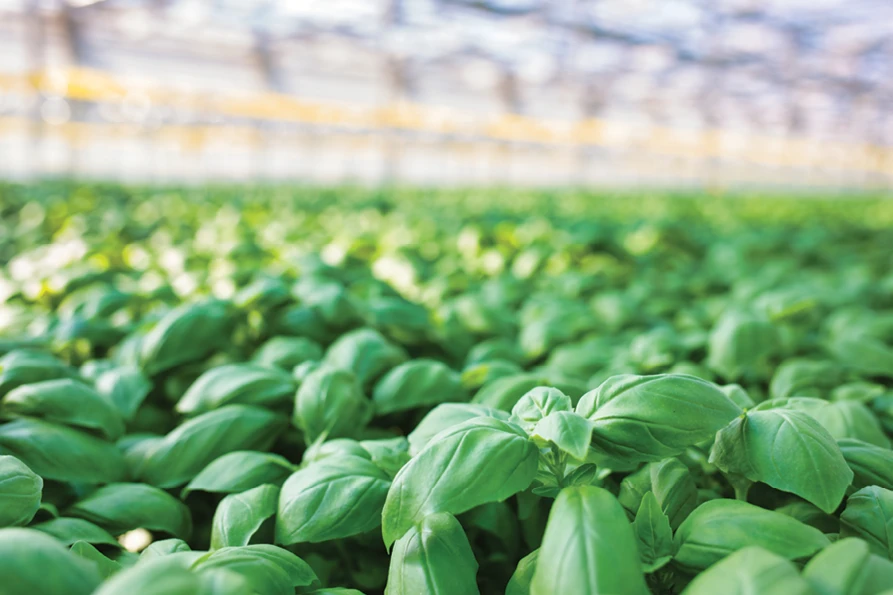
PHOTOS © MARY HAUSBECK; MOODBOARD | ADOBESTOCK; AND NANCY RECHCIGL
Dr. Mary Hausbeck, a university distinguished professor in the Department of Plant, Soil and Microbial Sciences at Michigan State University, says that while there are some excellent fungicides that are available to herb and vegetable greenhouses, the number of products is relatively low compared to the number of products available for bedding and potted ornamentals. More registrants are becoming aware of the need for products to be used on greenhouse herbs and vegetables for sale to the consumer. The USDA IR-4 Project has also been active in prioritizing these pesticide projects to conduct the necessary studies to register new products that are important to this industry.
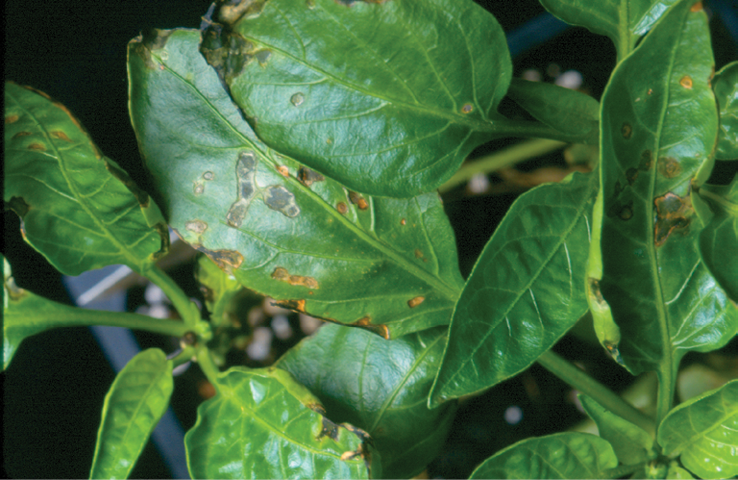
Bacterial leaf spot on a pepper plant.
“These crops have grown in popularity and are important to consumers and greenhouse growers. It’s inevitable that whenever a crop’s footprint increases, pests are likely to become evident and possibly damaging. Add to that a warm and humid greenhouse environment that generally favors pathogens, and the risk of crop loss due to pests increases even more,” Hausbeck says. “While some pests can be managed culturally through changes in growing practices and adjusting the environment, there are many other pests and instances where fungicides and insecticides are necessary to ensure a high-quality product.”
There are several Syngenta products registered to help protect vegetable and herb plants grown for resale in the retail market. Each has demonstrated effective control of many common diseases and insects that can affect vegetable production.
Carson Cashwell, ornamentals market manager at Syngenta, says that while each crop will have different insect pressures, the most common insects that affect vegetable crops are aphids, whiteflies, leafminers, shore flies and fungus gnats.
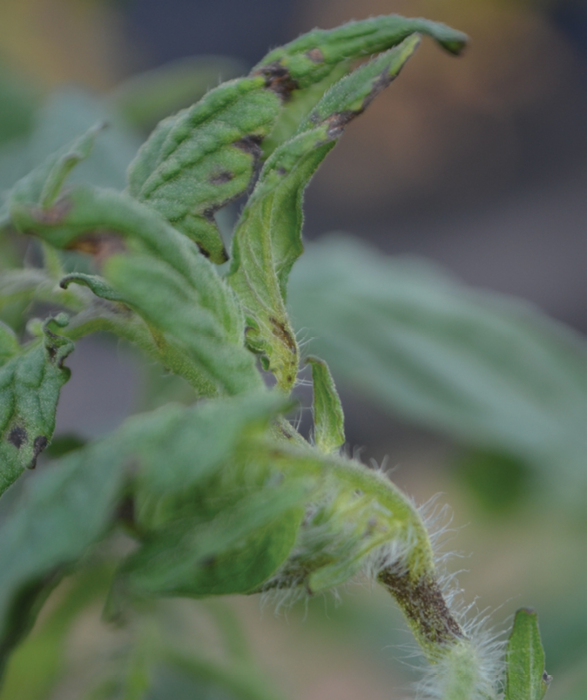
Citation® insect growth regulator, Endeavor® and Flagship® 25 WG insecticides are Syngenta products that have shown effective control of many common insects that can affect vegetable production.
The most common diseases that affect vegetable crops are leaf spots, rust, powdery mildew and downy mildew. Syngenta has several fungicides available to growers to help protect their vegetable production from diseases, including Postiva™, Mural®, Heritage®, Micora® and Subdue Maxx® fungicides. Segovis® fungicide is also a valuable tool to help control downy mildew on basil crops.

“Most recently, the Palladium® fungicide label has also been updated to include herbs and vegetables,” says Cashwell.
Endeavor, Flagship, Heritage, Segovis and Subdue Maxx can also be used on non-bearing fruits and nuts.
“Basil downy mildew has been especially challenging because once the pathogen is introduced to the greenhouse environment, it can reproduce and spread via air currents rapidly, putting all basil plants at risk,” Hausbeck says. “There are some excellent fungicides registered to help with this pathogen, but timing and environmental control are critical. Luckily, some of the new basil varieties offer genetics that offer resistance to downy mildew.”
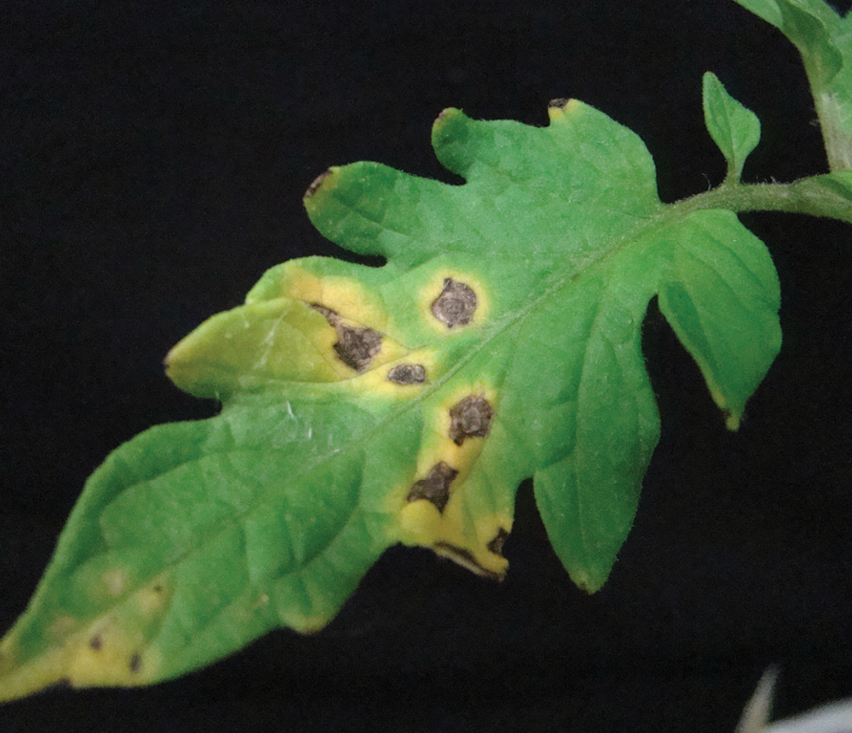
Hausbeck added that for tomatoes and peppers, bacterial leafspots are the most common and difficult to manage. Copper-based fungicides have been the standard to help with these bacterial problems, but some of the bacterial pathogens have developed resistance to copper, so these products aren’t as effective as they used to be.
“Postiva fungicide, the latest product in the Syngenta portfolio, can provide assistance here. While a true fungicide, Postiva provides excellent suppression of bacterial leaf spot diseases,” added Cashwell.
Scouting is also an important tool for insect and disease prevention that should not be overlooked.
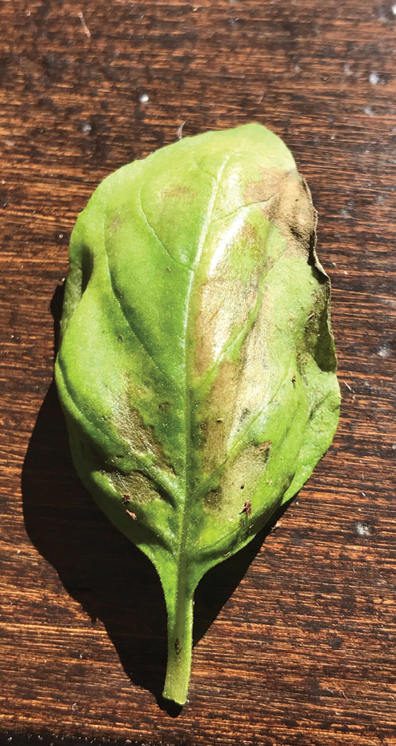
Beneficial insects are often used to control pests during vegetable production, and knowing whether a chemical product is compatible with beneficials is critical for a successful program. Syngenta has a selection of insecticides and fungicides that are compatible with a variety of beneficial insects, including Citation, Endeavor, Heritage, Micora and Subdue Maxx.
Syngenta offers growers a guide to protecting their edible crops, specifically vegetable and herb plants grown for retail sales, as well as a guide specifically for cultivating basil crops. The two guides provides growers with common insect and disease issues that certain crops face, as well as the Syngenta products that can be used to help growers control them.
“As the vegetable market continues to grow, Syngenta is always looking for ways to provide innovation and value to growers, whether through new chemistry or expanded labels,” Cashwell says.
For more information on successful vegetable and herb production, scan the QR code or visit GreenCastOnline.com/Vegetables.
Be sure to follow our YouTube page, @SyngentaOrnamentals to stay up to date on the latest news from Syngenta.
All photos are either the property of Syngenta or are used with permission.
© 2024 Syngenta. Important: Always read and follow label instructions. Some products may not be registered for sale or use in all states or counties and/or may have state-specific use requirements. Please check with your local extension service to ensure registration and proper use. Citation®, Endeavor®, Flagship®, Heritage®, Micora®, Mural®, Palladium®, Postiva™, Segovis®, Subdue Maxx®and the Syngenta logo are trademarks of Syngenta Group Company. All other trademarks are the property of their respective third-party owners.

Explore the HILA Class of 2024 Issue
Check out more from this issue and find your next story to read.
Latest from Nursery Management
- John Ruter shares UGA's latest woody and herbaceous ornamental plant breeding projects
- Conor Foy joins EHR's national sales team
- Pantone announces its 2026 Color of the Year
- Syngenta granted federal registration for Trefinti nematicide/fungicide in ornamental market
- Get to know Kayela Aeppli
- HILA 2025 video highlights: John Gaydos of Proven Winners
- Q&A with Justin Bartlett
- Be the best choice





